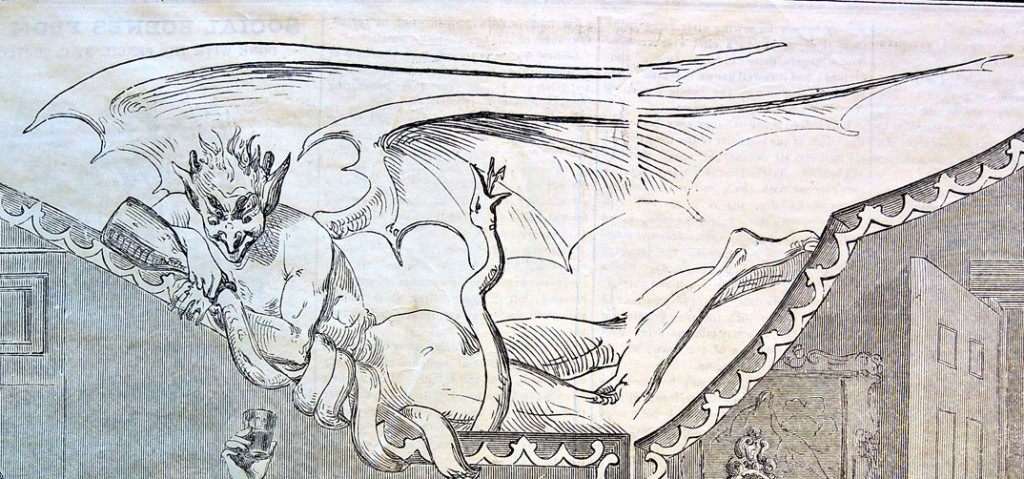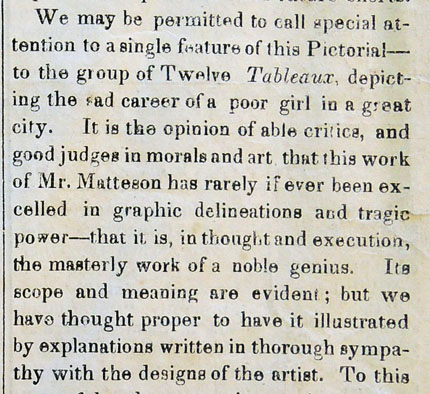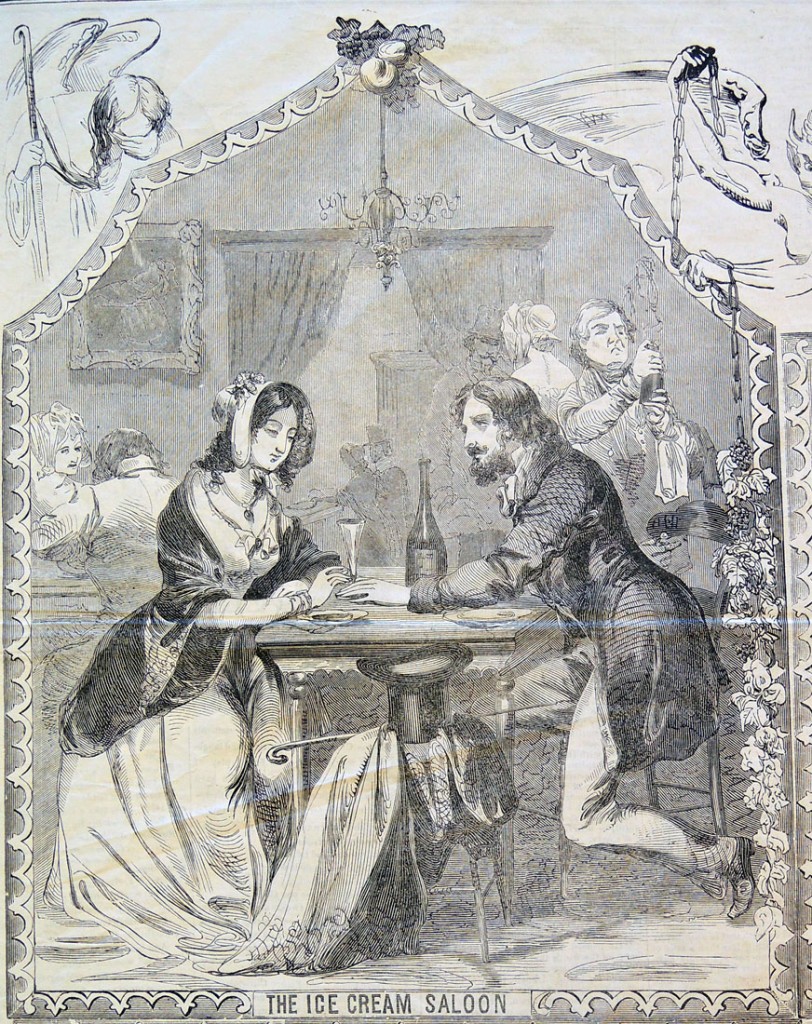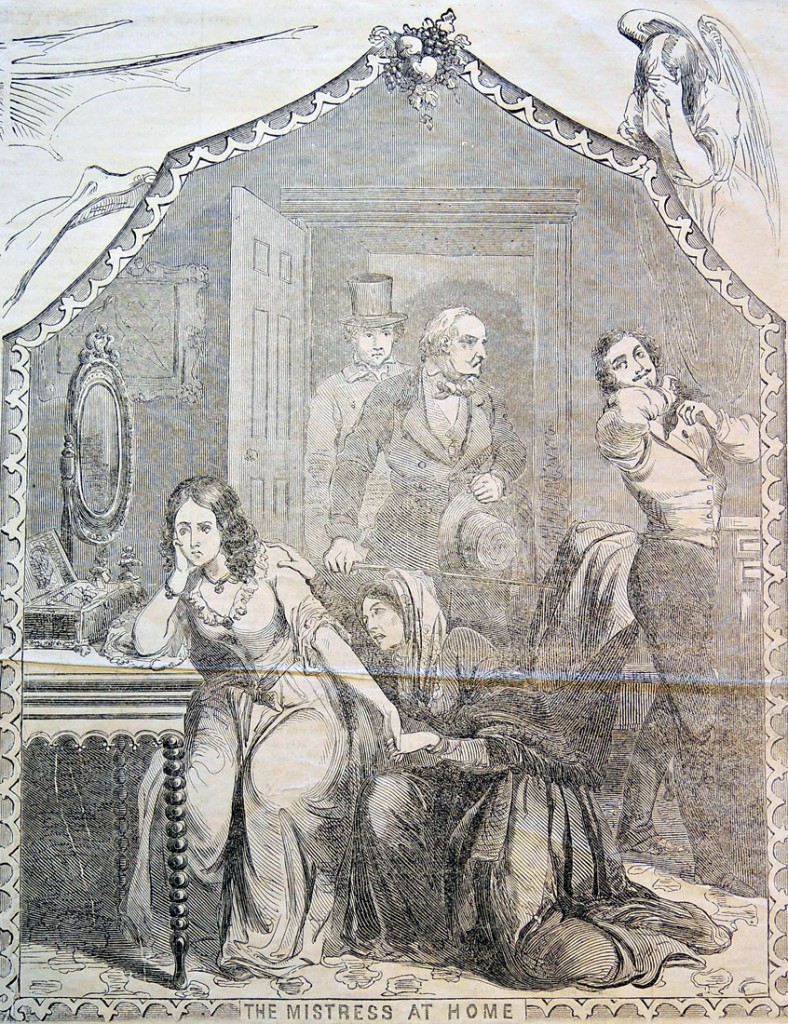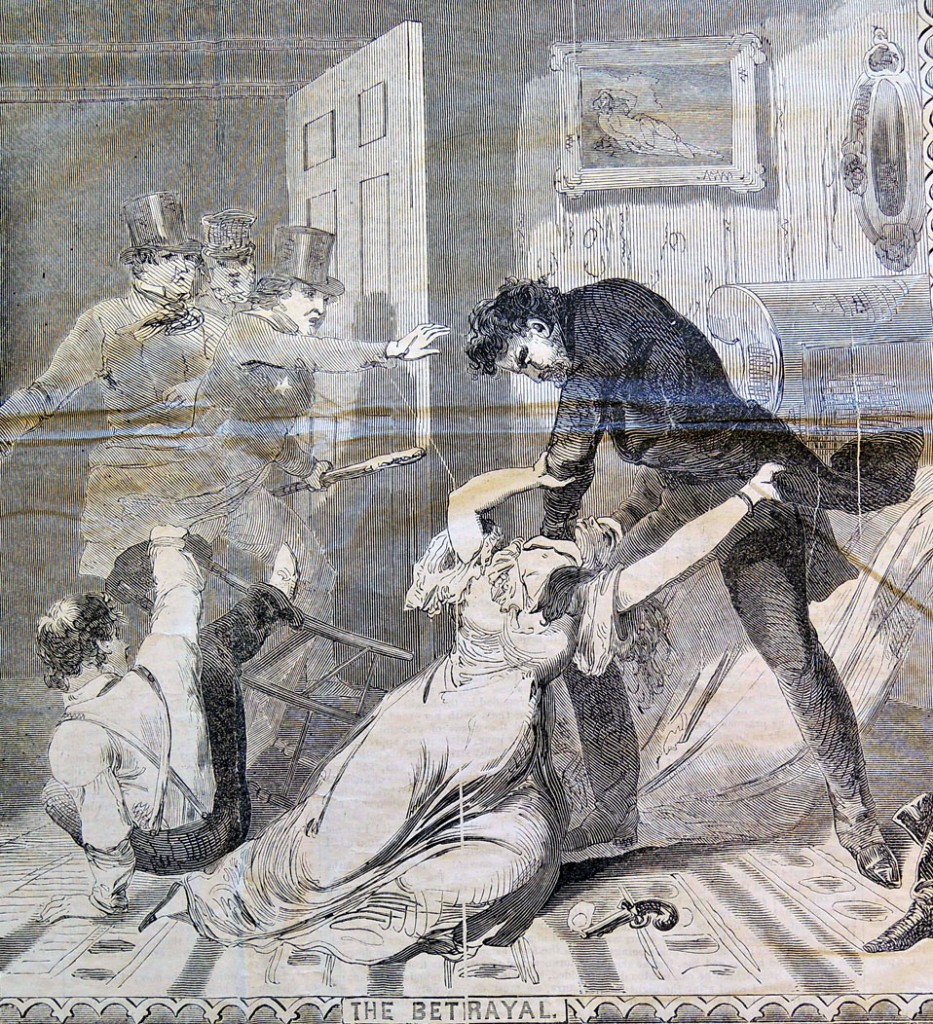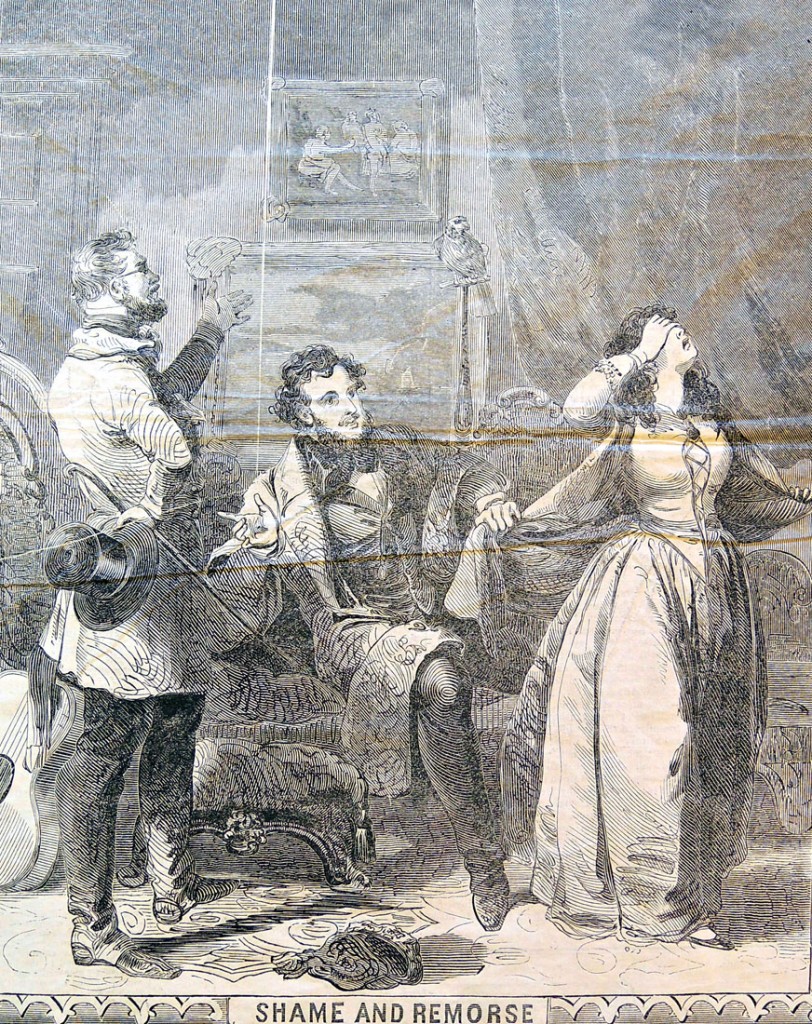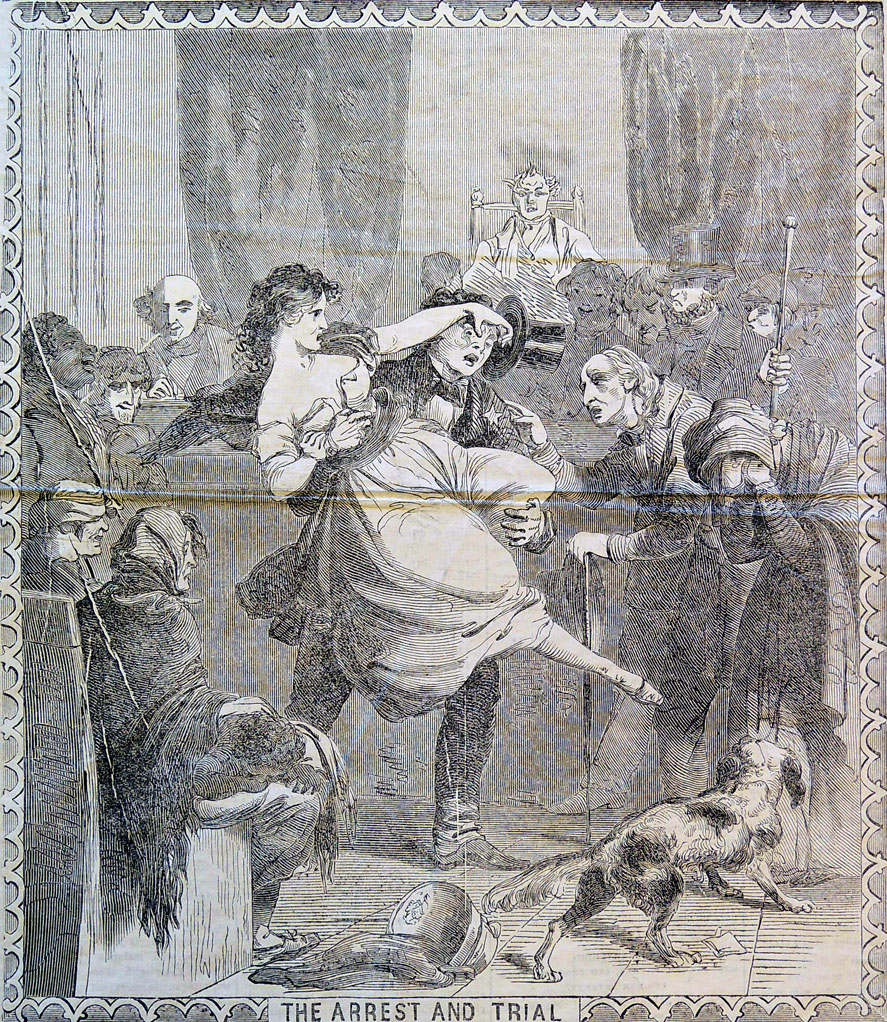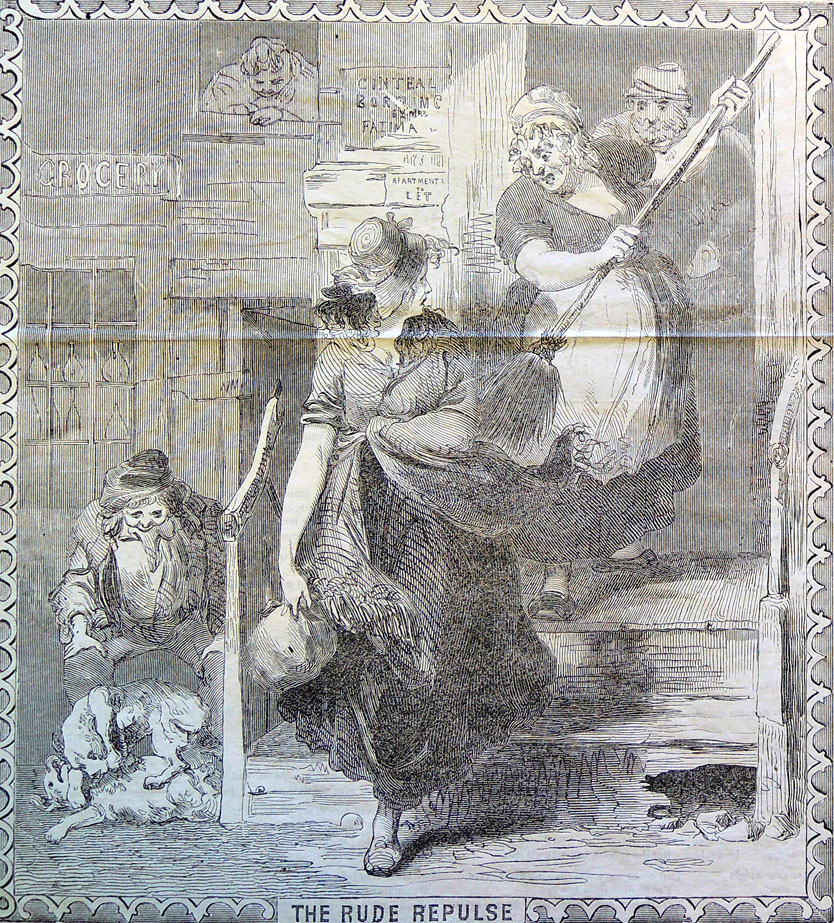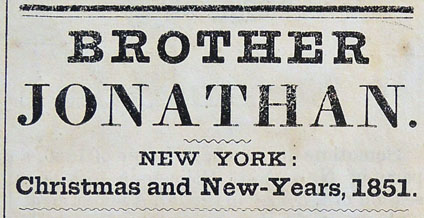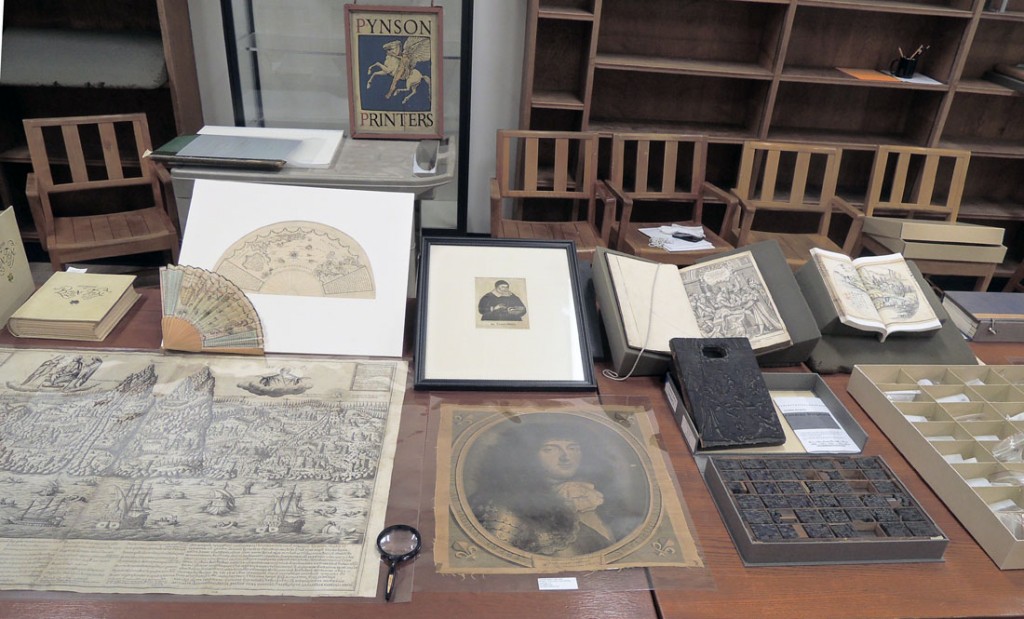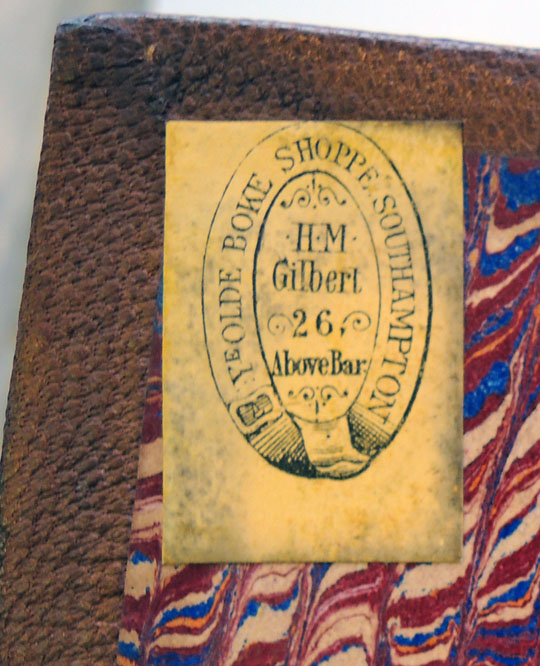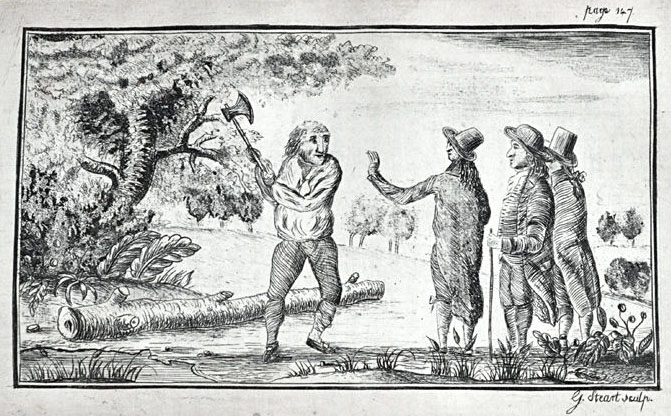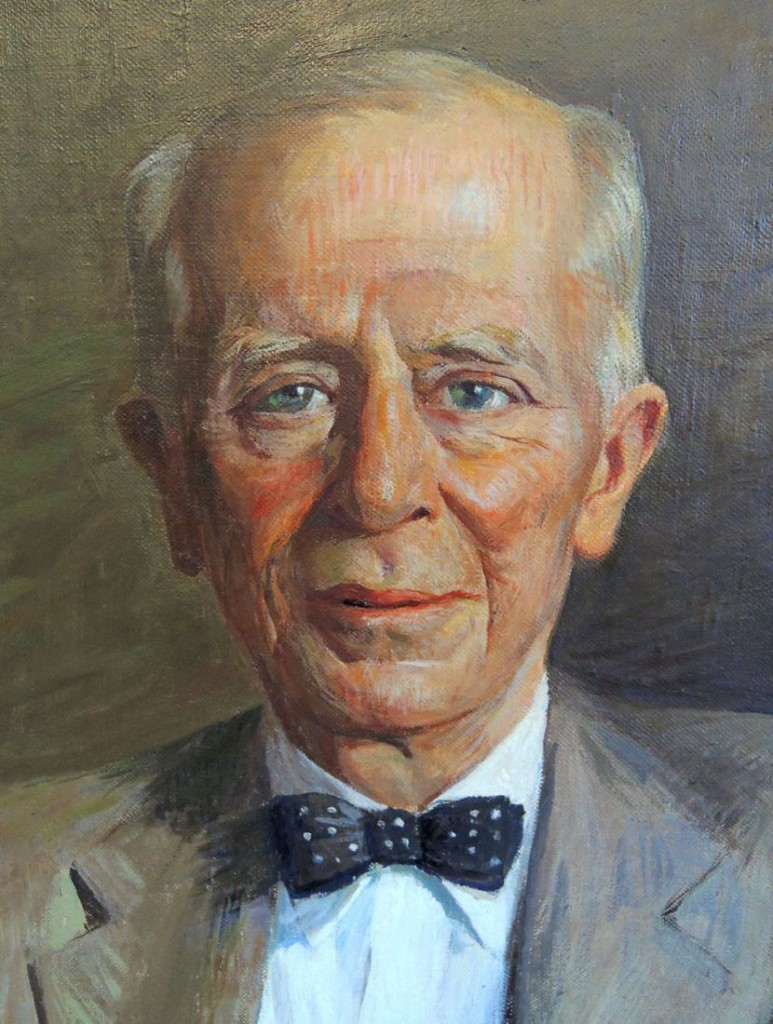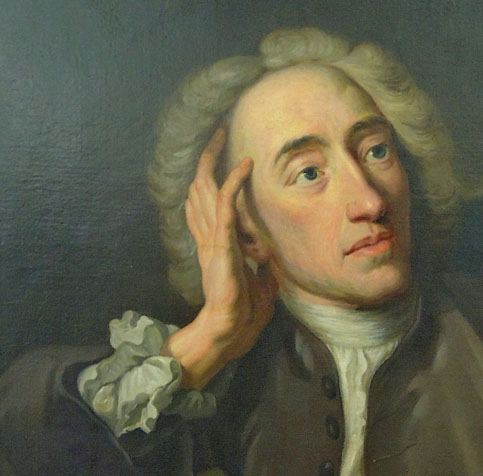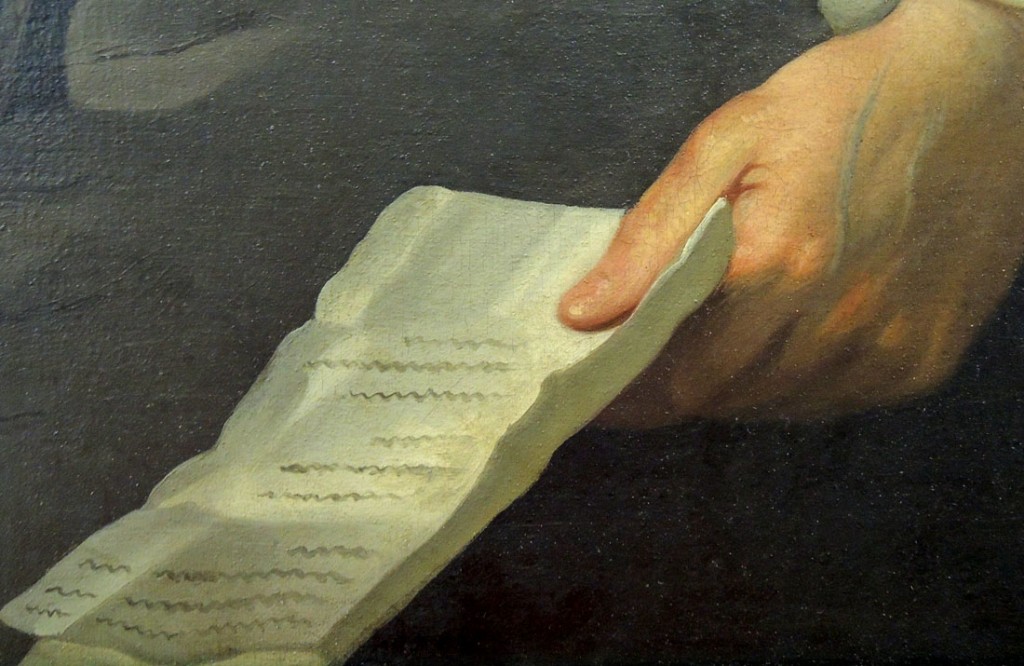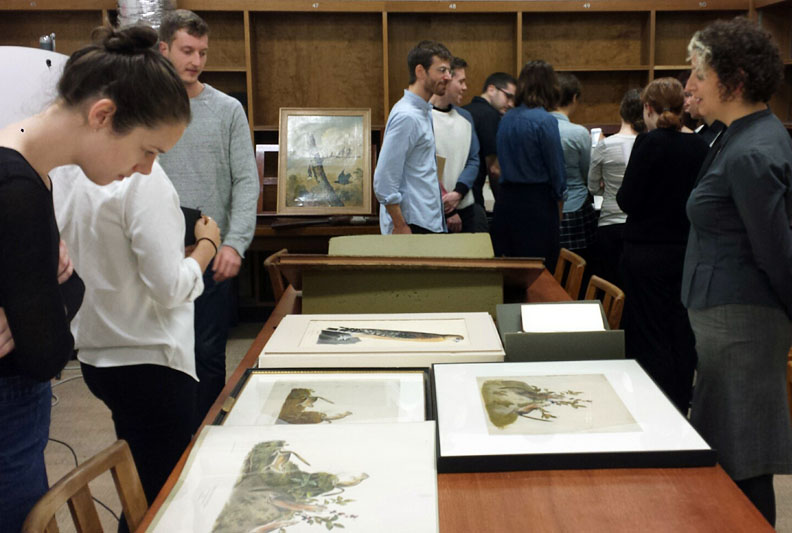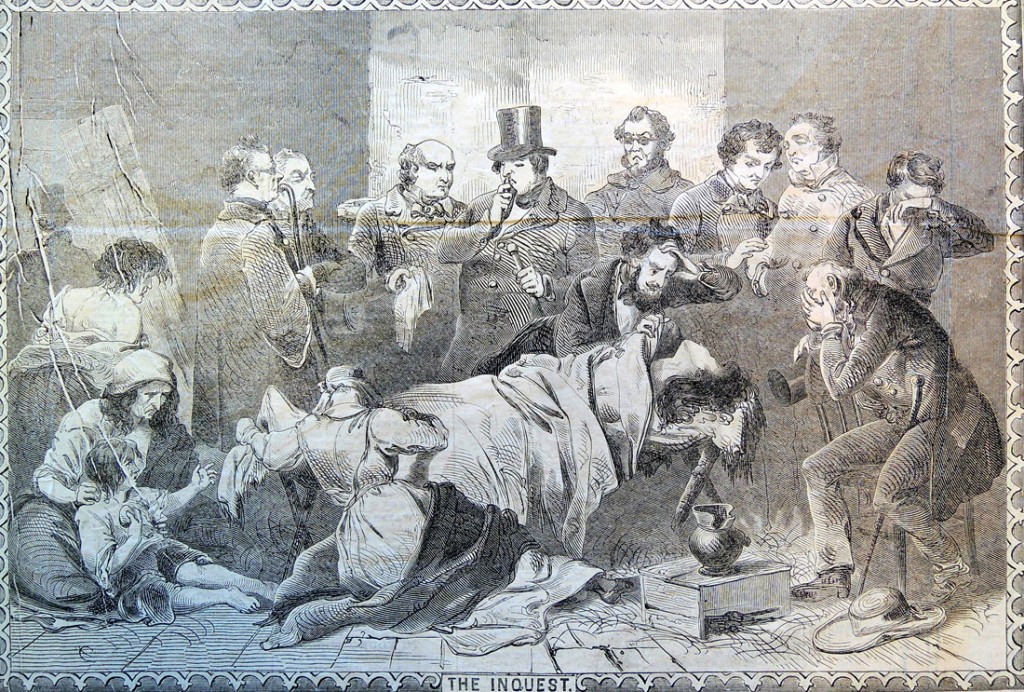
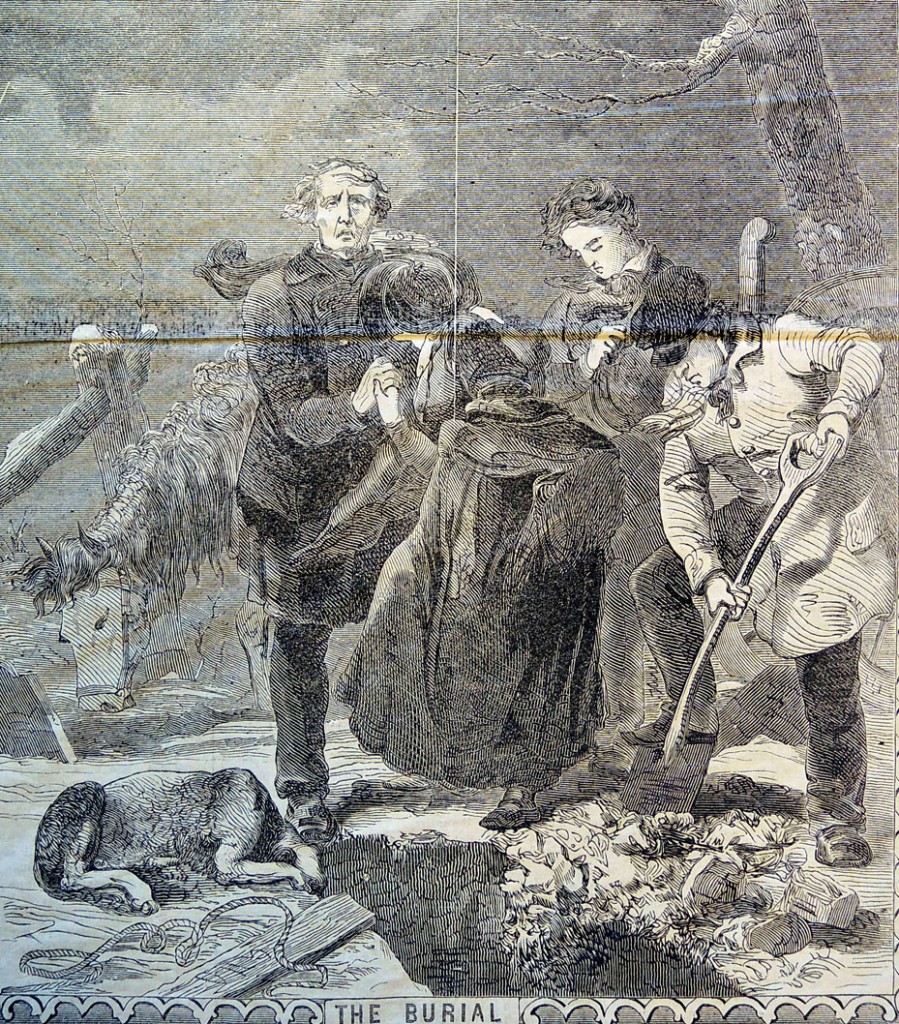

Tompkins Harrison Matteson (1813-1884), [Sad Career of a Poor Girl in a Great City] published in Brother Jonathan, Christmas 1850/New Years 1851. Wood engraving. Sinclair Hamilton Collection.
Welcome to the Cleveland Print Club
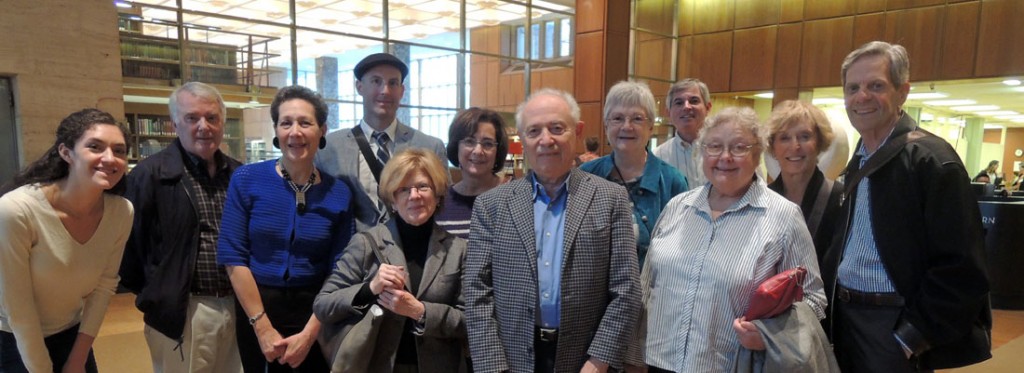 Last Friday, Dr. Jane Glaubinger, curator of prints at the Cleveland Museum of Art, escorted members of the Print Club of Cleveland on a visit to Princeton University. A portion of the group are seen above.
Last Friday, Dr. Jane Glaubinger, curator of prints at the Cleveland Museum of Art, escorted members of the Print Club of Cleveland on a visit to Princeton University. A portion of the group are seen above.
Founded in 1919 by collectors of fine art prints, the Print Club has been a resource for print collectors in the Western Reserve for 96 years. Thanks to their enduring commitment, nearly one-third of the Cleveland Museum’s superb collection of over 18,000 prints are gifts from the club or its members. In addition, the organization sponsors lectures, trips, and a Fine Print Fair benefiting the entire Cleveland community.
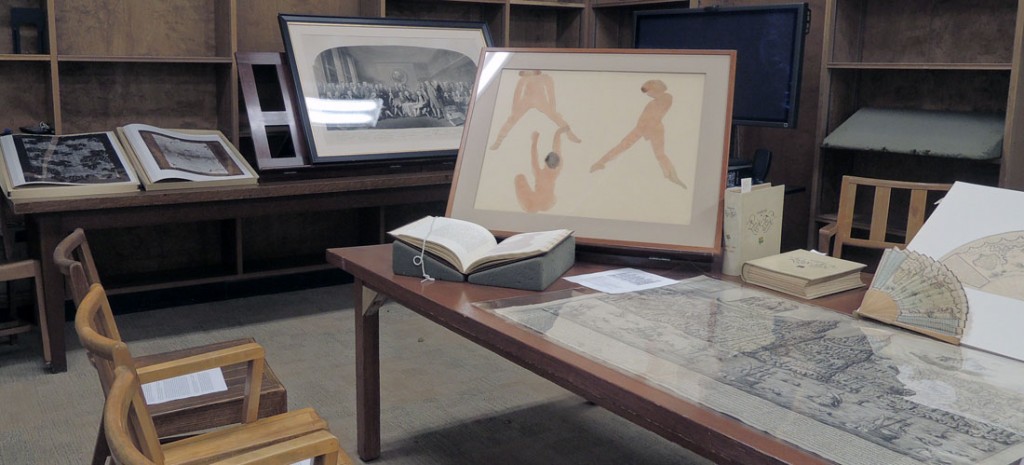
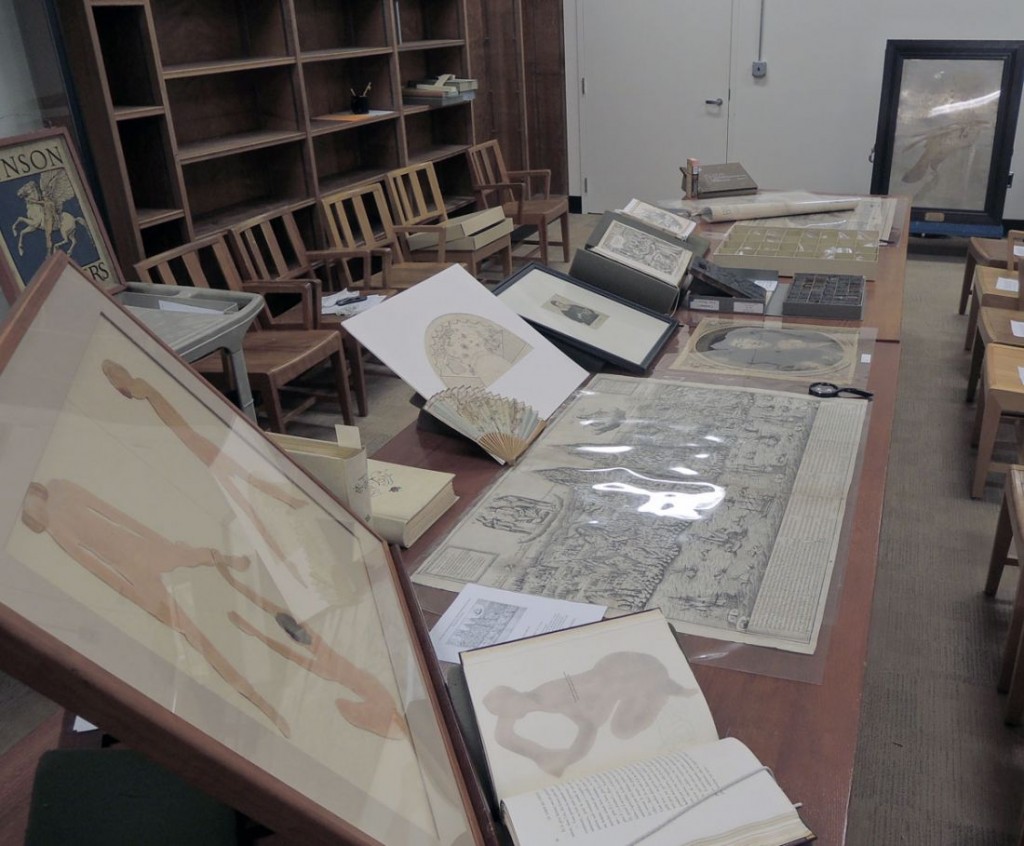 We pulled a wide variety of material in honor of their visit, including:
We pulled a wide variety of material in honor of their visit, including:
1. Pre-Columbian stamp seals and roller seals, no date [not after late 15th centuries]. Clay. Graphic Arts Collection. GC185. Gift of Gillett G. Griffin.
2. Original woodblock for the frontispiece of Realdo Colombo (ca. 1510-1559), De re anatomica libri XV (Venice: Vincenzo Valgrisi for Nicolai Bevilacqua, 1559). Pearwood block with cartouche cut-out at top for the title type inset. Graphic Arts
 3. John Foster (1648-1681), Portrait of Richard Mather, ca. 1670. Woodcut. Given in memory of Frank Jewett Mather Jr. by his wife, his son, Frank Jewett Mather III, and his daughter, Mrs. Louis A. Turner. Graphic Arts Collection, GA 2006.00728
3. John Foster (1648-1681), Portrait of Richard Mather, ca. 1670. Woodcut. Given in memory of Frank Jewett Mather Jr. by his wife, his son, Frank Jewett Mather III, and his daughter, Mrs. Louis A. Turner. Graphic Arts Collection, GA 2006.00728
4. Robert Nanteuil (1623-1678). Philippe, Fils de France, Duc d’Orléans, 1671. Engraving on satin cloth. Graphic Arts Collection GA 2005.01154. Gift of John Douglas Gordon, Class of 1905.
5. Wang, Gai (active 1677-1705), Jie zi yuan hua zhuan [casual English title: The Mustard Seed Garden Painting Manual. Part one 1679, part two and three ~1701. Woodblock prints in five colors. Graphic Arts Collection.
6. Alessandro dalla Via (active 1688-1729), General View of Mount Athos, printed ca. 1707. Etching and engraving. Graphic Arts Collection GA 2015- in process. Gift of the Program in Hellenic Studies with the support of the Stanley J. Seeger Hellenic Fund and matching funds provided by a gift of The Orpheus Trust to the Seeger Center for Hellenic Studies, in honor of the 35th anniversary of Hellenic Studies at Princeton.
7. Allegorical Map of the Track of Youth, to the Land of Knowledge (London: John Wallis, June 25, 1796). Engraved fan by Vincent Woodthorpe (ca.1764-1822) with hand coloring. Purchased with funds from the Historic Map Collection and Graphic Arts Collection.
8. Attributed to Theodore Lane (1800-1828), The Attorney-General’s Charges Against the Late Queen, Brought Forward in the House of Peers, on Saturday, August 19th, 1820 (London: George Humphrey [1821]). Gift of Richard Waln Meirs, Class of 1888. Graphic Arts Collection (GA) Oversize Cruik 1820.29E
9. Maria Wilds, Zante the Negro, 1848. Needlework on canvas. Graphic Arts Textiles Collection GC 072. Zante, the little Negro: (addressed to the English child) (Birmingham [England]: Printed for T. Groom, 1830).
10. Printing plate for John James Audubon (1785-1851), The Birds of America, 1826-1838. Steel-faced copperplate with aquatint.
11. Frank Leslie (1821-1880) after Charles Parsons (1821-1910), Bird’s-Eye View of New York City, 1854. Wood engraving. In Brother Jonathan, July 4, 1854, Jubilee edition. Rare Books
12. Designed by Sir John Gilbert (1817-1897); Drawn by Frederick John Skill (1824-1881) and William Walker the Younger (1791-1867); Engraved by William Walker and Georg Zobel (1810-1881); Printed by J. Brooker. The Distinguished Men of Science of Great Britain Living in the Years 1807-8. Published by William Walker, London. 4 June 1862. Stipple engraving. Graphic Arts Collection
13. Katagami or Japanese cut-paper stencils.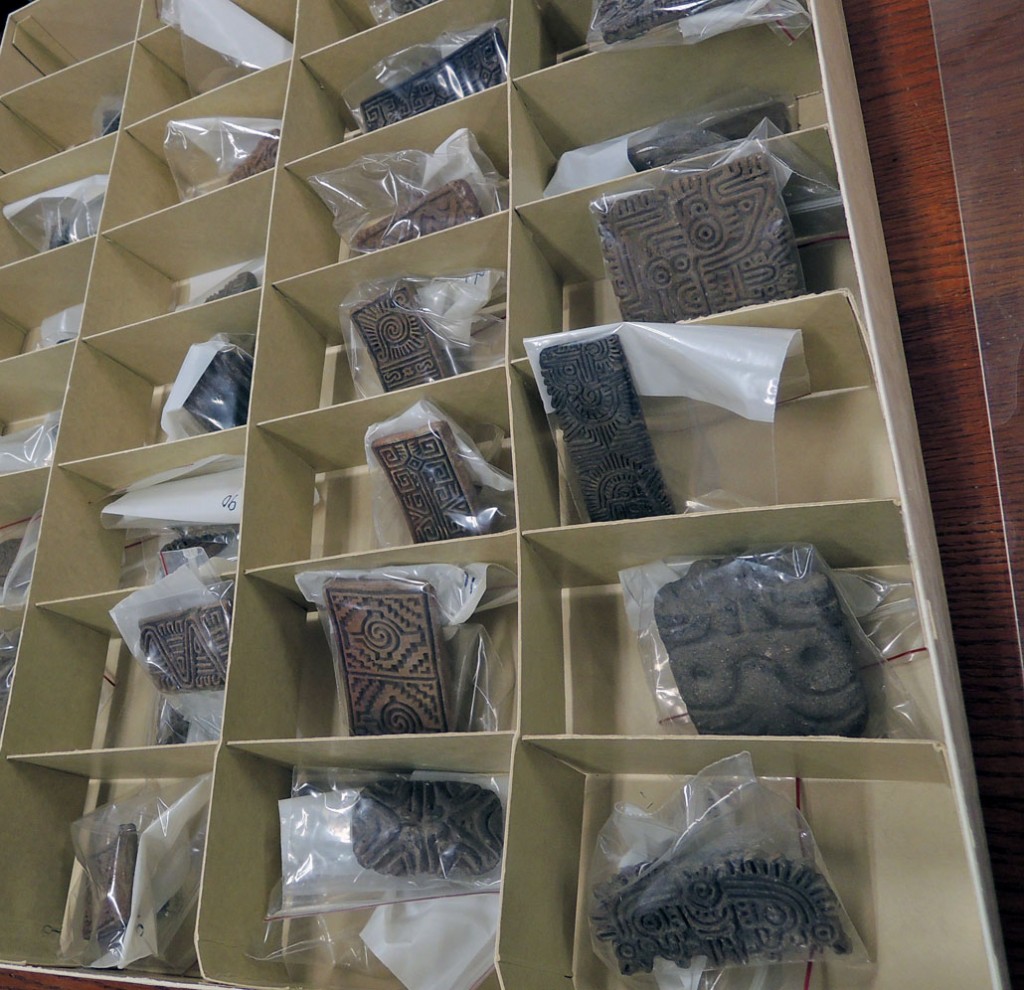
14. Album Lefèvre-Utile [also called Album des célébrités contemporaines]. Nantes: Lefèvre-Utile, [1900?]. Graphic Arts collection oversize 2009-0005Q
15. Auguste Rodin (1840-1917) and Octave Mirbeau (1848-1917), Le Jardin des supplices [The Torture Garden] (Paris: Ambroise Vollard, 1902). One of 155 copies on velin from a total edition of 200. Graphic Arts Collection. In addition, original cut paper figures.
16. Gazette du bon ton: arts, modes et frivolities (Paris: Lucien Vogel, 1912–1925). 700 pochoir plates. Graphic Arts Collection (GAX) Oversize GT500 .G252q
17. Rockwell Kent “dingbats” for the printing of Voltaire (1694-1778), Candide (New York: Random House, 1928). Graphic Arts Collection.
18. Antonio Martorell, Las Antillas Letradas [The Lettered Authors of the Antilles], 2014. 27 multi-media prints. Copy 1 of 100. Graphic Arts Collection (GAX) Oversize 2014-0031E. Purchased with funds provided by the Program in Latin American Studies.
They kindly also listened to the story of our collection, Elmer Adler, and the Pynson Printers. Thanks to our new friends for taking time away from “print week” to make the visit.
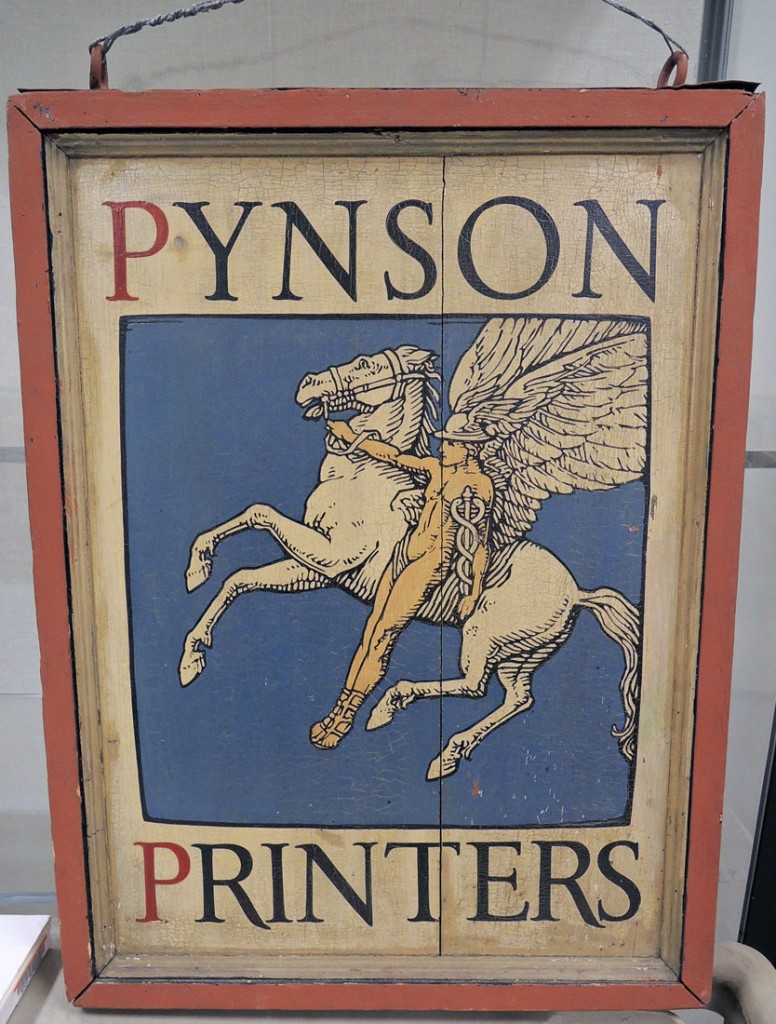
A Schizzo on the Genius of Man
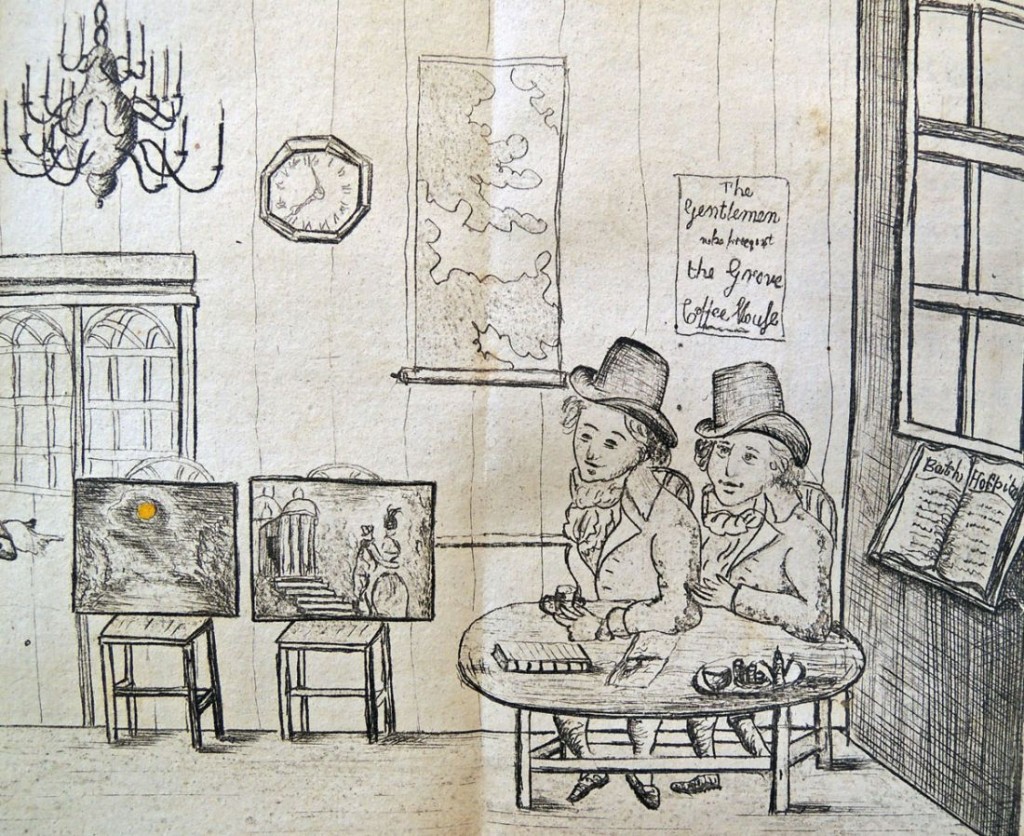 Edward Harington (1754-1807), A Schizzo on the Genius of Man: In which, among various Subjects, the Merits of Mr. Thomas Barker, the Celebrated Young Painter of Bath, is particularly Considered, and his Pictures Reviewed, by the Author of An Excursion from Paris to Fontainbleau. For the Benefit of the Bath Casualty Hospital. Two etched plates by G. Steart. First Edition. Bath: printed by R. Cruttwell; and sold by G.G.J. and J. Robinson, London, and all the Booksellers in Bath, 1793. Graphic Arts Collection GAX 2015- in process
Edward Harington (1754-1807), A Schizzo on the Genius of Man: In which, among various Subjects, the Merits of Mr. Thomas Barker, the Celebrated Young Painter of Bath, is particularly Considered, and his Pictures Reviewed, by the Author of An Excursion from Paris to Fontainbleau. For the Benefit of the Bath Casualty Hospital. Two etched plates by G. Steart. First Edition. Bath: printed by R. Cruttwell; and sold by G.G.J. and J. Robinson, London, and all the Booksellers in Bath, 1793. Graphic Arts Collection GAX 2015- in process
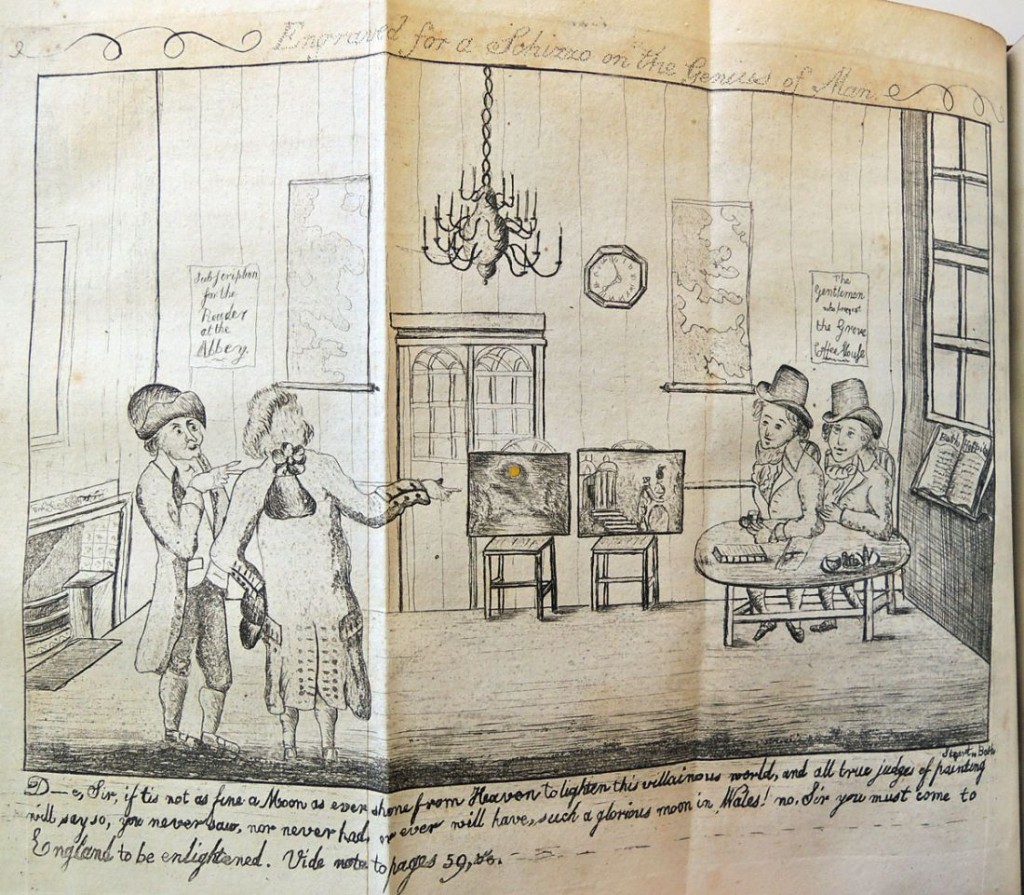 “D—e, Sir, if tis not as fine a Moon as ever shone from Heaven to lighten this villainous world, and all true judges of Painting will say so, you never saw, nor never had, or ever will have, such a glorious moon in Wales! No, Sir, you must come to England to be enlightened. Vide note to pages 59, &e.”
“D—e, Sir, if tis not as fine a Moon as ever shone from Heaven to lighten this villainous world, and all true judges of Painting will say so, you never saw, nor never had, or ever will have, such a glorious moon in Wales! No, Sir, you must come to England to be enlightened. Vide note to pages 59, &e.”
 Edward Harington (1754-1807) of Harington-Place, Bath, was the son of Dr. Henry Harington, noted musician, physician to the Mineral Water Hospital, and Mayor of Bath.
Edward Harington (1754-1807) of Harington-Place, Bath, was the son of Dr. Henry Harington, noted musician, physician to the Mineral Water Hospital, and Mayor of Bath.
An Excursion from Paris to Fontainbleau was published in 1786 and Harington was fearful of the French Revolution along with the “rude, ragged rabble.” A Schizzo on the Genius of Man was intended to prove that genius is conferred not by nurture but by nature, not by a process of evolution but through the agency of divine providence.
Harington took the Bath artist Thomas Barker (1769-1847) [see yesterday’s post] as an example of an individual whose talents were born within him, not acquired. Unlike some painters “who basely prostitute their talents to despicable face-painting,” Barker had “a too generous disdain for the love of money to pervert the talents which Heaven had given him.” Even Gainsborough, he averred, “never possessed a genius so strong and so universal.”
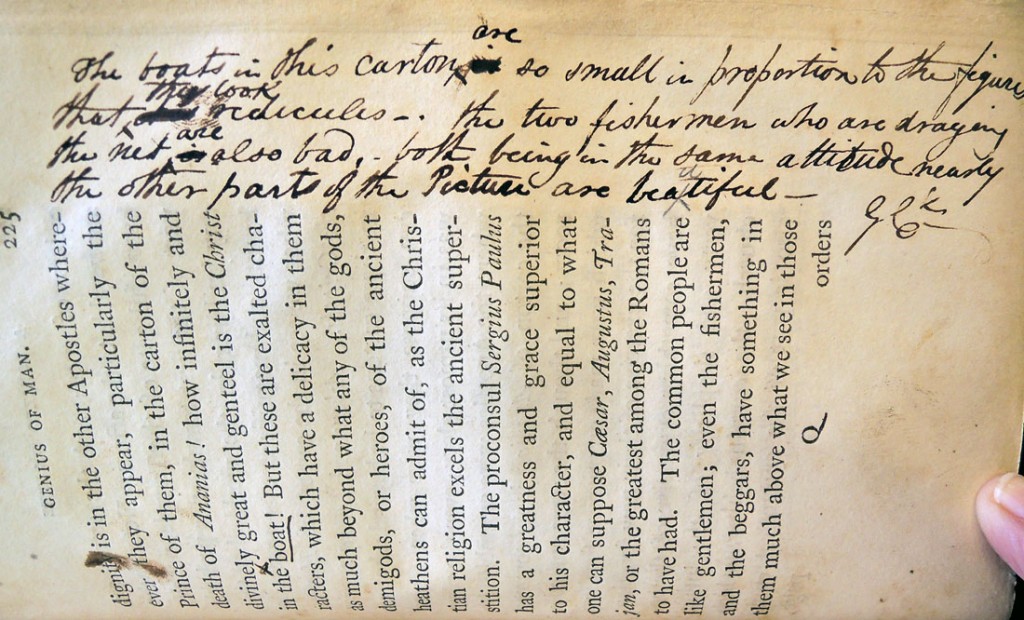
 The Graphic Arts Collection has acquired George Cruikshank’s copy of this book with his bold signature and the date 1850 at the head of the title. Cruikshank also added a manuscript note, in ink, in the margin of p. 225.
The Graphic Arts Collection has acquired George Cruikshank’s copy of this book with his bold signature and the date 1850 at the head of the title. Cruikshank also added a manuscript note, in ink, in the margin of p. 225.
Discussing Raphael’s cartoon of the The Miraculous Draught of Fishes, he writes: “The boats in the carton [sic] are so small in proportion to the figures that they look ridiculous. The two fishermen who are draging [sic] the net are also bad, both being in the same attitude nearly. The other parts of the picture are beautiful – G.C.”
1850 was a pivotal year in the life of George Cruikshank (1792-1878). His first wife, Mary Anne, died in May 1849 and he collapsed, both emotionally and financially. In March 1850 he married Eliza Widdison, and they moved to 48 Mornington Place.
Cruikshank slowly returned to his art, and turned to oil-paintings, though without the success of his smaller-scale etchings. His studio also became home to his maid, Adelaide Attree, who bore him 11 children between 1854 and 1875. His other passion was temperance and he came to be regarded as “the St. George of water drinkers”.
Bookseller’s label of H. M. Gilbert of Southampton (established 1859). The half-title has the ink signature of the potter William Henry Goss (1833-1906), and a note “See in my library “Barker’s Landscape Scenery” and my remarks therein about pictures in my collection by J. Barker the son of Thomas Barker” with his signature and date 6th December 1887.
Lithographic incunables
 Thomas Barker (1769-1847), Forty Lithographic Impressions from Drawings of Landscape Scenery by Thomas Barker, Selected from His Studies of Rustic Figures after Nature (Bath, printed by D.J. Redman, 1813). Lithographs printed on different color paper with added sepia wash. Graphic Arts Collection GAX 2015- in process
Thomas Barker (1769-1847), Forty Lithographic Impressions from Drawings of Landscape Scenery by Thomas Barker, Selected from His Studies of Rustic Figures after Nature (Bath, printed by D.J. Redman, 1813). Lithographs printed on different color paper with added sepia wash. Graphic Arts Collection GAX 2015- in process
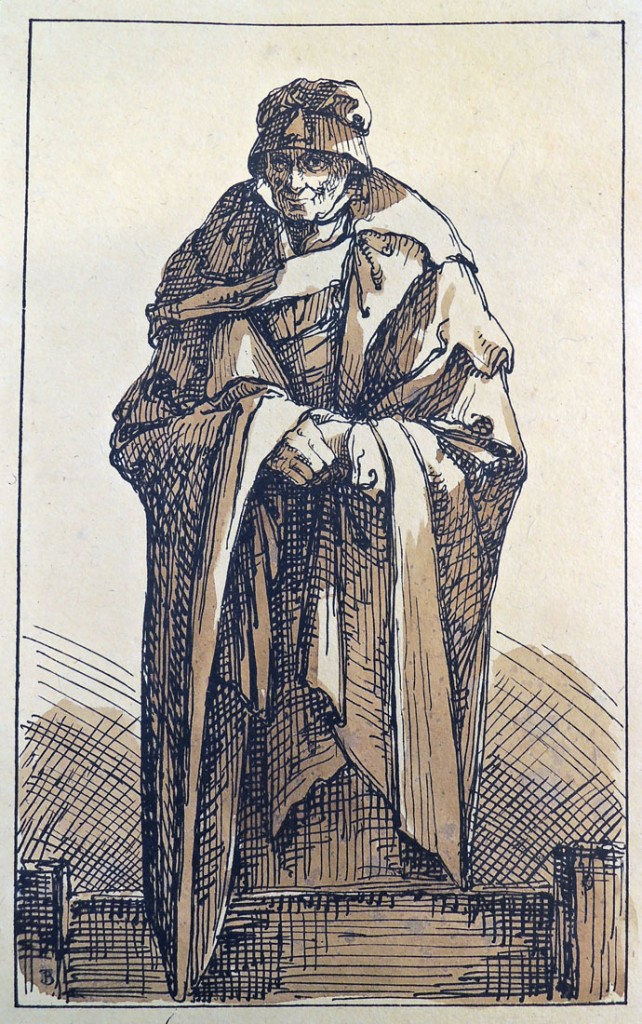 “Until 1812 there seems to have been only one set of lithographic equipment in England, for the press set up by Senefelder passed successively from André to Vollweiler and then to the quarter-Master-General’s Office. But at the close of 1812 or the beginning of 1813 Redman decided to branch out on his own and set up the first English lithographic press outside London at the fashionable city of Bath.
“Until 1812 there seems to have been only one set of lithographic equipment in England, for the press set up by Senefelder passed successively from André to Vollweiler and then to the quarter-Master-General’s Office. But at the close of 1812 or the beginning of 1813 Redman decided to branch out on his own and set up the first English lithographic press outside London at the fashionable city of Bath.
No doubt the work he had been doing at the Horse guards was thoroughly menial compared with the printing he had previously done with André and Vollweiler, and at Bath he directed his attention principally to the printing of artists’ drawings. While there he came into contact with Bankes, who wrote and published the first English treatise on lithography at Bath in 1813.
It is reasonable to suppose that it was Redman who instructed Bankes in the technical side of the process, for he is described in the text as being ‘under the patronage of the artists there, and at the service of the public, to provide the necessary materials, viz. the ink and pencil, and to prepare the stone, and take the impressions from drawings made on it’. Moreover, it was provably through Redman that Bankes obtained some of the original stones of the Specimens of Polyautography, for once again there is a suggestion that these should be reissued.
 With the removal of Redman from London, Bath was now the centre of lithography in England—at least for the printing of artists’ drawings—and all the important productions for the next three years were printed by Redman there.”–Michael Twyman Lithography 1800-1850, pp.34-35.
With the removal of Redman from London, Bath was now the centre of lithography in England—at least for the printing of artists’ drawings—and all the important productions for the next three years were printed by Redman there.”–Michael Twyman Lithography 1800-1850, pp.34-35.
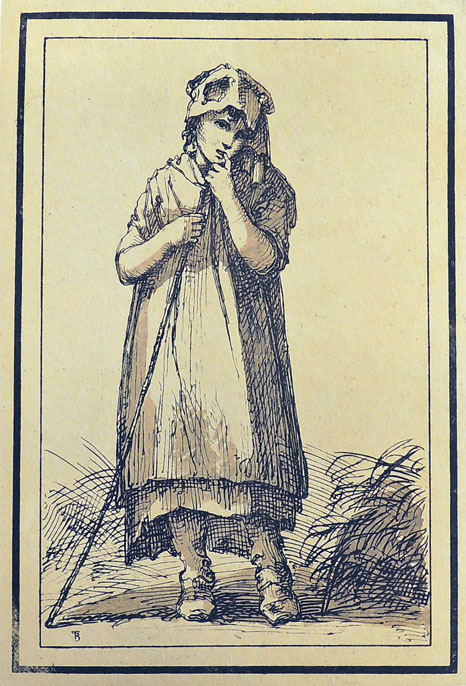


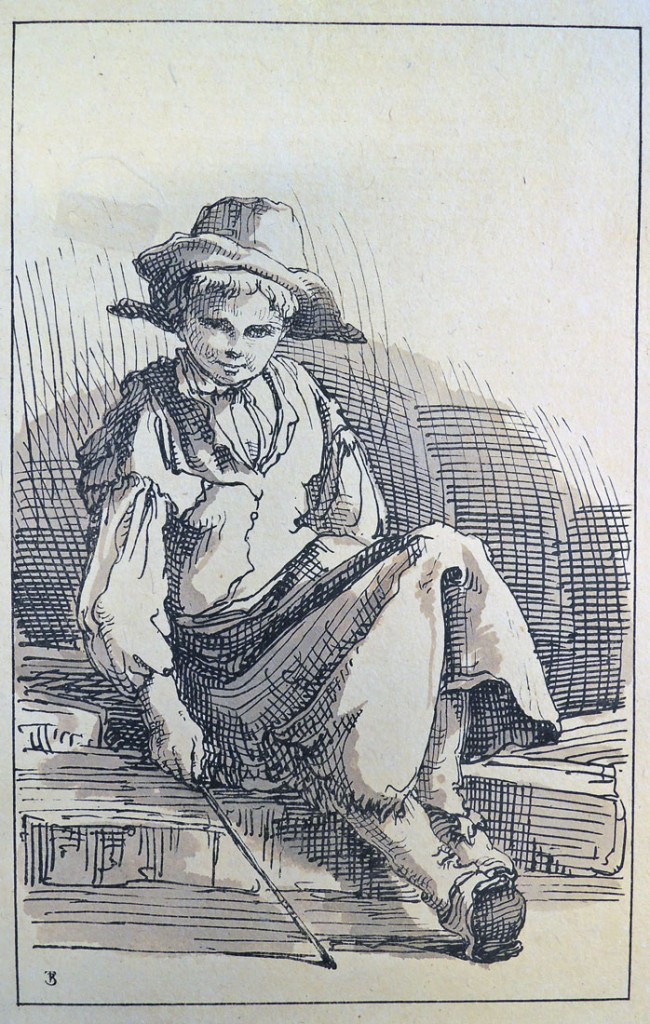
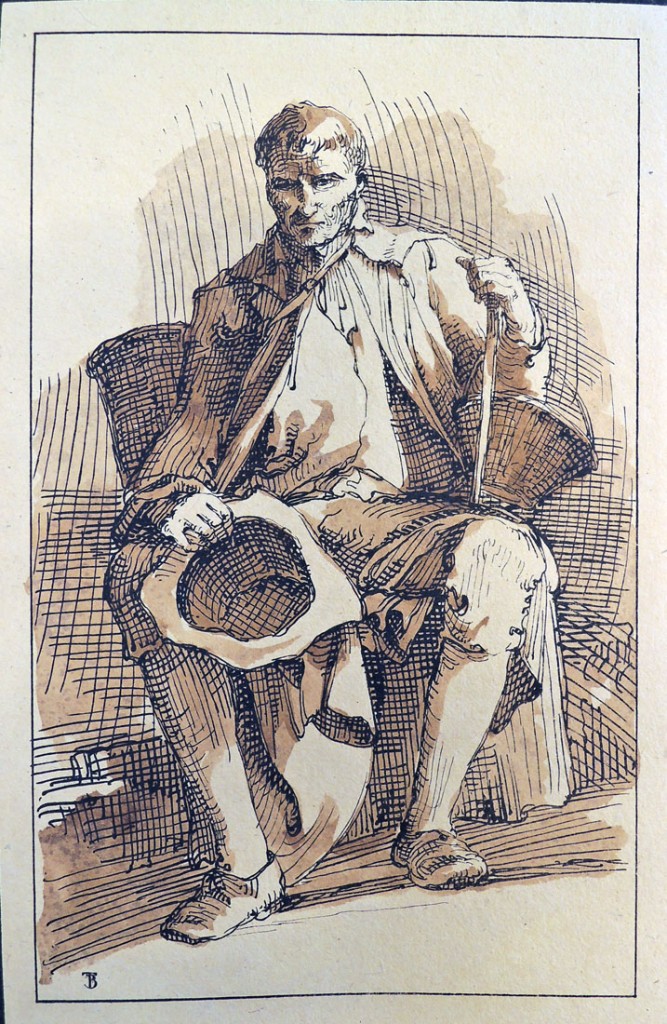

Cigarette Cards

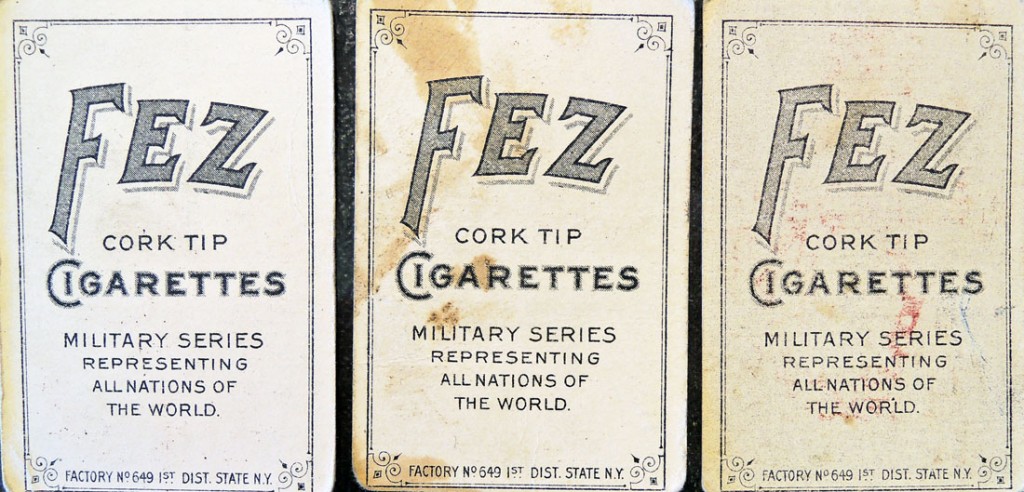
The Graphic Arts Collection has a large, and largely uncatalogued, collection of chromolithographed cigarette cards from the 19th and early 20th centuries. Included are cards from Turkey Red, Fez, and Duke cigarettes, among others. Most American companies inserted a coupon in the package, which could be exchanged for the actual cards.
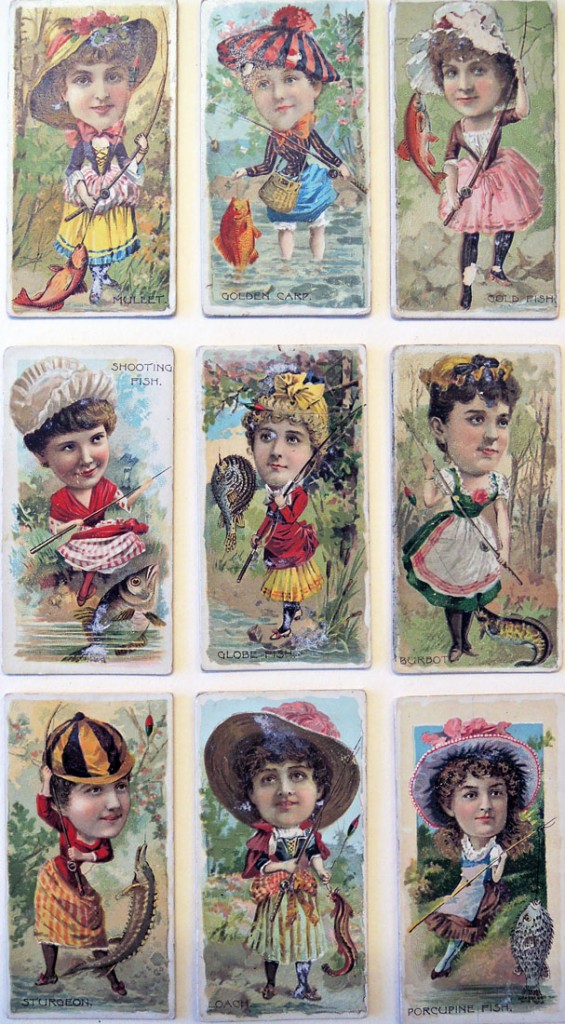 These cards [above] were circulated by Duke cigarettes. Duke University posted this guide to the W. Duke, Sons & Co. records and advertising materials, 1876-1953, which reads in part: “W. Duke, Sons & Co. was a tobacco manufacturer founded by Washington Duke in 1881. His son, James B. Duke, later became president of the American Tobacco Company. …There are also advertising materials dated 1876-1904, including trading cards, albums, and other advertising collectibles from the W. Duke Sons & Co., Liggett & Myers, American Tobacco, and other tobacco companies.”
These cards [above] were circulated by Duke cigarettes. Duke University posted this guide to the W. Duke, Sons & Co. records and advertising materials, 1876-1953, which reads in part: “W. Duke, Sons & Co. was a tobacco manufacturer founded by Washington Duke in 1881. His son, James B. Duke, later became president of the American Tobacco Company. …There are also advertising materials dated 1876-1904, including trading cards, albums, and other advertising collectibles from the W. Duke Sons & Co., Liggett & Myers, American Tobacco, and other tobacco companies.”
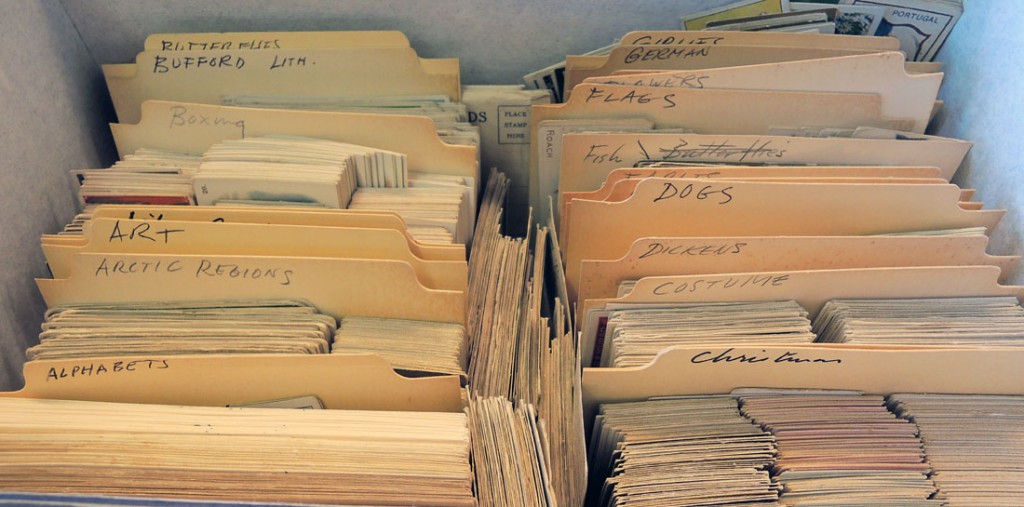
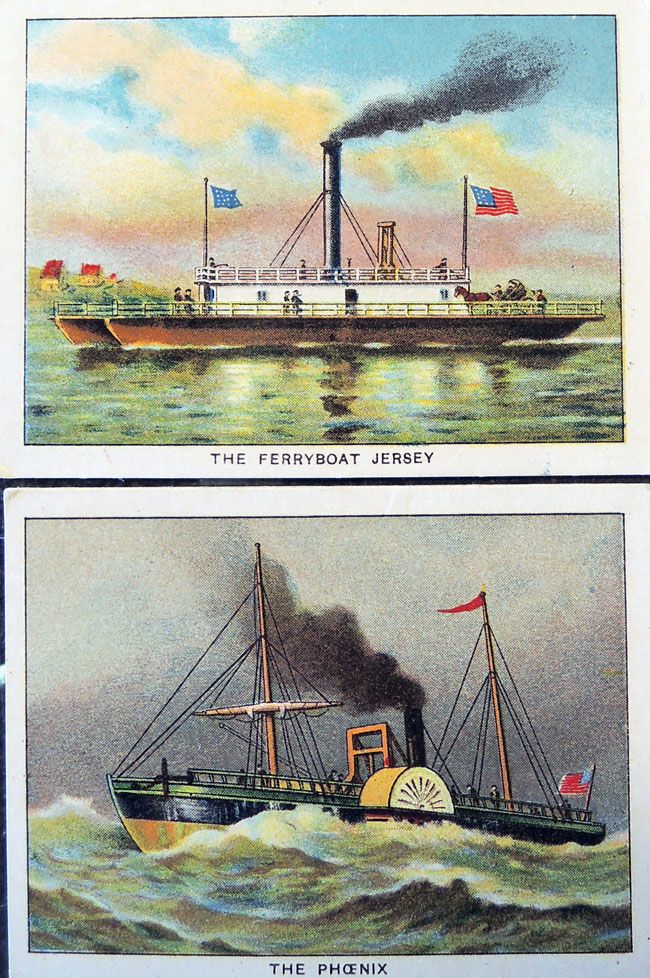 These cards are from Turkey Red cigarettes. Here is a brief history posted by a contemporary collector: “Inserted into 10-cigarette packages of Turkey Red cigarettes beginning in the summer of 1909, this attractive and historical 25 card set featured subjects related to the 1909 Hudson-Fulton Celebration. The Hudson-Fulton Celebration was a commemoration of Henry Hudson’s discovery of the Hudson River, 300 years earlier, along with recognition of Robert Fulton who invented the steamship and tested it on the Hudson in 1807. Individual cards of Hudson and Fulton feature portraits on the front and information regarding their lives and accomplishments on the back. The remaining cards in the set feature horizontal depictions of various steamships and other scenes.”– http://www.t3turkeyred.com/index.html
These cards are from Turkey Red cigarettes. Here is a brief history posted by a contemporary collector: “Inserted into 10-cigarette packages of Turkey Red cigarettes beginning in the summer of 1909, this attractive and historical 25 card set featured subjects related to the 1909 Hudson-Fulton Celebration. The Hudson-Fulton Celebration was a commemoration of Henry Hudson’s discovery of the Hudson River, 300 years earlier, along with recognition of Robert Fulton who invented the steamship and tested it on the Hudson in 1807. Individual cards of Hudson and Fulton feature portraits on the front and information regarding their lives and accomplishments on the back. The remaining cards in the set feature horizontal depictions of various steamships and other scenes.”– http://www.t3turkeyred.com/index.html

Francis C. MacDonald, chosen by Woodrow Wilson
As we are preparing this portrait of former English professor Francis C. MacDonald to be hung on the 2nd floor, it is a good time to remember how well loved he was by his students. Here is a section from his obituary in the Princeton Alumni Weekly.
“By the death of Frances [sic] Charles MacDonald on March 26, 1952, Princeton lost one of her most devoted sons and the Faculty a teacher of exceptional gifts. He was born on Sept. 24, 1874, in Bangkok, where his father was at once a missionary and the representative of the United States at the Siamese court. At the age of ten he was brought to this country to prepare for college, but he never lost his command of the tongues he first learned and proved his mastery of it in middle life by using the language at least on one occasion when he delivered a public address in Siam.”
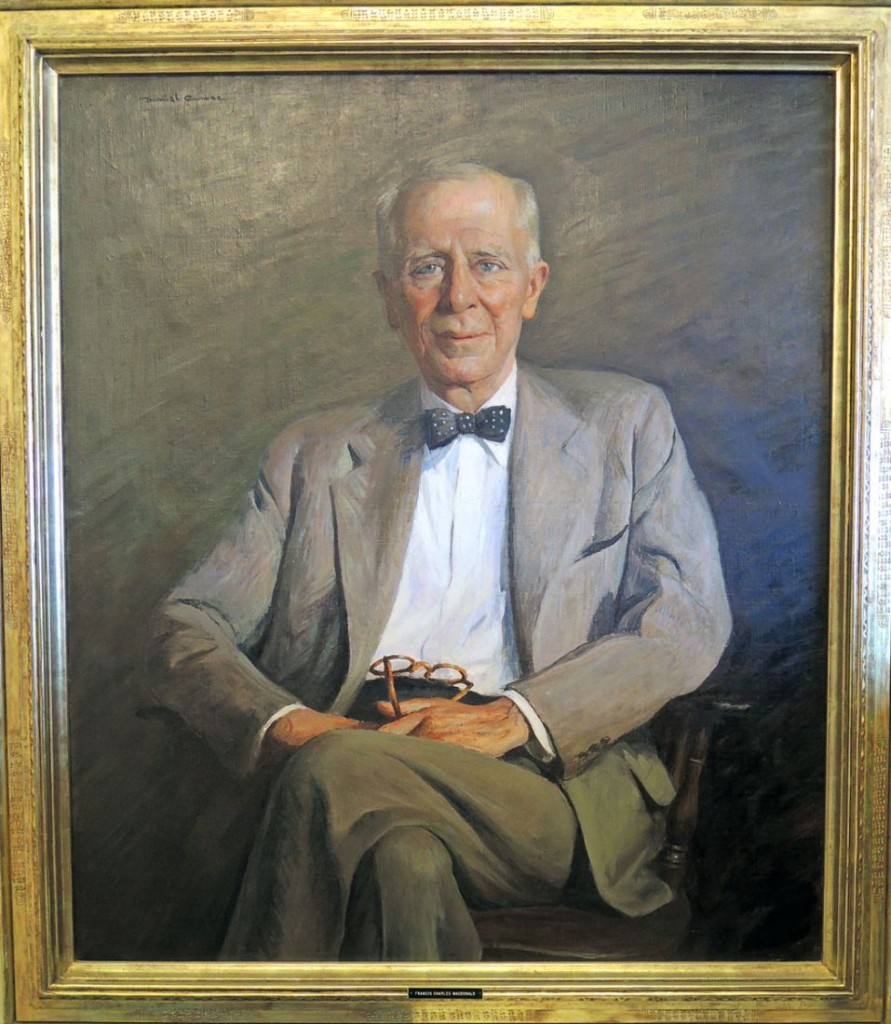
Daniel Garber (1880-1958), Portrait of Francis Charles MacDonald, no date. Oil on canvas. Princeton Portraits, Graphic Arts Collection.
After his graduation from Princeton in 1896 he held a position for a time in the University library; then, from 1902 to 1905 he was an instructor of English in Lake Forest College. President Wilson recognized his outstanding merits by recalling him to Princeton in the latter year as one of the original preceptors, and he continued to serve on the Faculty until 1936 when he retired because of ill health. From 1917 until 1929 he was on leave in Japan as assistant to his classmate Ambassador Morris and with him took an important part on the momentous negotiations in Siberia which followed the First World War
Following his return to this country he was in 1921 made an Associate Professor of English and had much to do in shaping the work of his department, notably by advocating and arranging opportunities for serious practice in writing. He had a phenomenal capacity to inspire students to read the best literature and to write up to their highest abilities. Countless men look back upon him as the professor who gave them most. He himself published in 1919 a novel of considerable distinction entitled Sorcery and in 1922 a volume of verse Devices and Desires, of which the poet La Gallienne said in a review: “It is long since I read a book so full of the avid spirit of youth,” that spirit never failed him. Those who knew him from his early days spoke constantly of his infections gaiety and ready wit. . . .
The books he cherished and taught them to enjoy he left to the university and it is singularly appropriate that the poetry room in the new library given by one of his many admiring students should henceforth bear his name.” –“Memorials: Francis Charles MacDonald, class of 1896,”
Princeton Alumni Weekly May 30, 1952

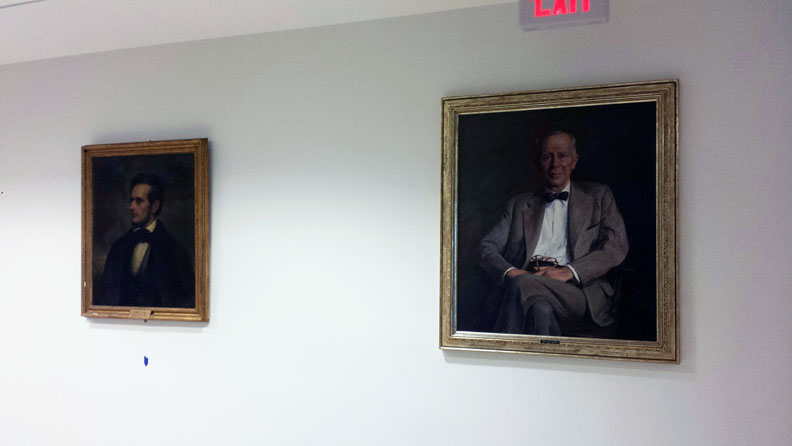
 Visit Prof. MacDonald on the 2nd floor along with William Seymour (1855-1933), Arnold Henry Guyot (1807-1884); and Mathew Carey (1760-1839).
Visit Prof. MacDonald on the 2nd floor along with William Seymour (1855-1933), Arnold Henry Guyot (1807-1884); and Mathew Carey (1760-1839).
Print 100

A panel discussion entitled Printmaking Now was held today at the Philadelphia Museum of Art in honor of the centenary of Philadelphia’s Print Center (1614 Latimer Street). Sarah Suzuki, Associate Curator in the Department of Drawings and Prints at the Museum of Modern Art, led a discussion exploring the inventive uses of print with artists Rirkrit Tiravanija and Elizabeth Peyton, along with David Lasry of Two Palms Press.
This was only one of 100 exhibitions, publications, and programs scheduled over the next few months to celebrate Print 100. Founded in 1915 as the Print Club, the Center was one of the first venues in this country dedicated to the appreciation of prints. The organization was established to support the “dissemination, study, production, and collection of works by printmakers, American and foreign.” In 1942, The Print Center donated its collection of prints to the Philadelphia Museum of Art forming the core of their fledgling print department.
A digital guidebook to events is available here.
The list of activities begins with events at The Print Center:
1. Gabriel Martinez: Bayside Revisited
2. Recollection: Group Exhibition
3. New Website for The Print Center
4. The Print Center Timeline
5. Print Center Stories – Personal Recollections
6. The Print Center 100 Announcement Poster
7. The Print Center 100 Guidebook
8. Gala
9. Street Party
10. Centennial Portfolio
11. WHYY Friday Arts Feature
12. The Legacy of The Print Center, Lecture
13. Kayrock Screenprinting, Pop-up Shop
14. BYO Social, The Print Center Publications
15. Book Launch, Printeresting’s Ghost
16. Writer’s Workshop with artblog & The St. Claire
17. PECO Crown Lights
18. Open Door, Philadelphia Sketch Club
19. Artists Takeover of The Print Center’s Instagram
20. Neighborhood Social with Center City Residents Association

Mildred Dillon, The Print Club, Serigraph, 1944. Print and Picture Collection, Free Library of Philadelphia
21. Emerging Collectors Event
22. Centennial Members Closing Party
23. Centennial Publication
24. New Commission: Amze Emmons
25. New Commission: Julia Blaukopf
26. New Commission: Henry Horenstein
27. New Commission: Dina Kelberman
28. New Commission: Ken Lum
29. New Commission: Dennis McNett
30. New Commission: Critical Writing
Numbers 31-60 are on view in The Print Center’s first floor gallery September 18 to December 19, 2015. The exhibition highlights art, ephemera and objects drawing out their history, mission and evolution from a club to an internationally recognized voice in printmaking and photography.
Numbers 61-100 are exhibitions, programs, and projects presented as part of The Print Center 100 by their partners in the Philadelphia region and beyond.
Alexander Pope
The last of sixty-six oil portraits made of Alexander Pope (1688-1744) during his lifetime was a half-length pose painted by the French society painter Jean-Baptiste van Loo (1684-1745). The artist enjoyed considerable success in London between 1738 and 1742, and this work was painted at the end of that period. Several copies were commissioned directly from Van Loo and many others were painted or engraved by other artists, making this image the best known of all his portraits. Although he looks quite elegant, disease had left Pope’s body deformed with a severe hunchback.
Unidentified artist, after a painting by Jean-Baptiste van Loo (French, 1684–1745), Portrait of Alexander Pope (British, 1688–1744), 1800s. Oil on canvas, original ca. 1742, author’s age fifty-four. Robert H. Taylor Collection, Rare Books and Special Collections
Ode to Solitude by Alexander Pope
Happy the man, whose wish and care
A few paternal acres bound,
Content to breathe his native air,
In his own ground.
Whose herds with milk, whose fields with bread,
Whose flocks supply him with attire,
Whose trees in summer yield him shade,
In winter fire.
Blest, who can unconcernedly find
Hours, days, and years slide soft away,
In health of body, peace of mind,
Quiet by day,
Sound sleep by night; study and ease,
Together mixed; sweet recreation;
And innocence, which most does please,
With meditation.
Thus let me live, unseen, unknown;
Thus unlamented let me die;
Steal from the world, and not a stone
Tell where I lie.
Delving into the Double Elephants
 Posted in honor of a visit from ART 562: Seminar in American Art – Impossible Images, taught by Rachael Z. DeLue, associate professor of American art.
Posted in honor of a visit from ART 562: Seminar in American Art – Impossible Images, taught by Rachael Z. DeLue, associate professor of American art.

 William Stillman? “Poetic Episodes in Nature,” The Crayon, vol. 3 (May 1856): 138.
William Stillman? “Poetic Episodes in Nature,” The Crayon, vol. 3 (May 1856): 138.
“Besides, have we not books on the Poetry of Science? Were those ages more poetic than ours, when Botany wore nothing but a repulsive habit to the poet, and its devotees cared nothing for flowers except to make them tenants of a ghostly herbarium, wrapping them up like a parcel of mummies within the thick leaves of pressing maps, writing their epitaphs in unintelligible, pompous Latin, that would make an old Roman stare?
Assuredly, there is poetry in the age that will call for and sustain such books, as the two we have quoted, whose authors see something more than a marvel of mechanism in a flower, and to whose perceptions the coursing sap is the heart’s blood of the plant, and the unobserved mollusk, royally happy in his abode, the sharer of some of the enjoyments man would vainly judge were his alone.
Audubon painted his delineations of birds when he had just killed them, making a mossy log his seat and his lap his easel; and they accordingly have that vraisemllance to life, that Buffon and his compeers never could reach, daintily at work in the library, with a distorted, bead-eyed, staffed specimen before them. Audubon is a type of the truest investigator of Nature, holding marvellous communions with her, understanding her as few do, and observing her component parts in relation to each other, as well as in themselves.”
One of the contemporary artists working in a similar fashion is Walton Ford. This video shows how Ford’s work is (and Audubon’s work was) printed.
The Art of Making Fireworks


[left] T. Angelo, The Art of Making Fireworks made Plain and Easy, Containing Comprehensive Directions for Making Sky Rockets…&c.&c. 3d ed. (London: J. Bailey [1815]). Folding frontispiece by George Cruikshank. Graphic Arts Collection (GA) Cruik 1815.4. Gift of Richard Waln Meirs, Class of 1888.
[right] The Juvenile Book for Making Fireworks: Being the Art of Manufacturing Crackers, Squibs &c. &c. of Every Description … / by a public performer at the gardens (London: Printed by Bailey & Company, [ca. 1837]). Cotsen Children’s Library (CTSN) Pams / Eng 19 / Box 064 1940
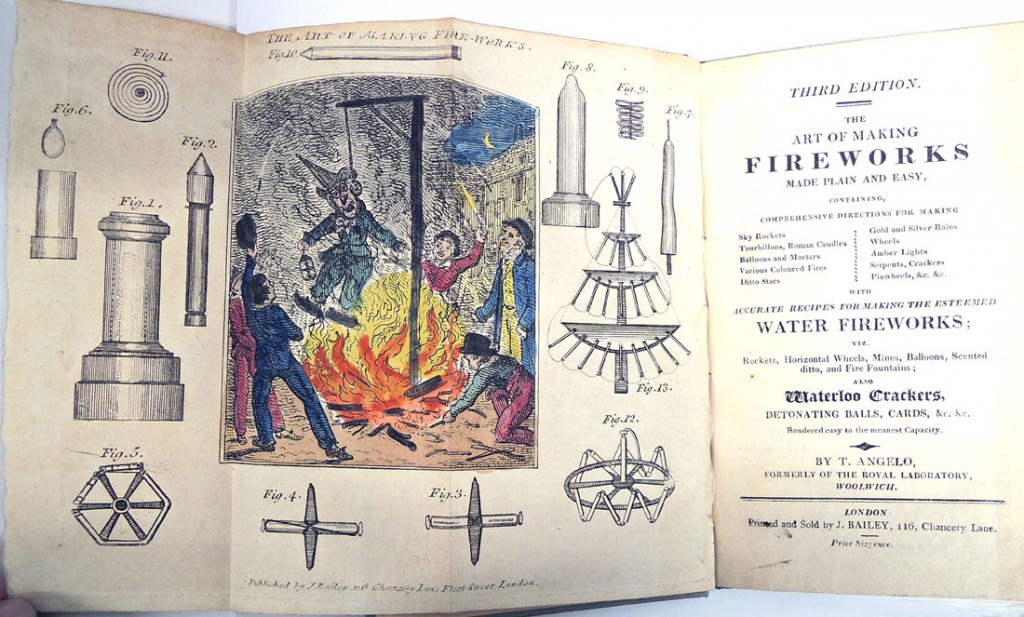
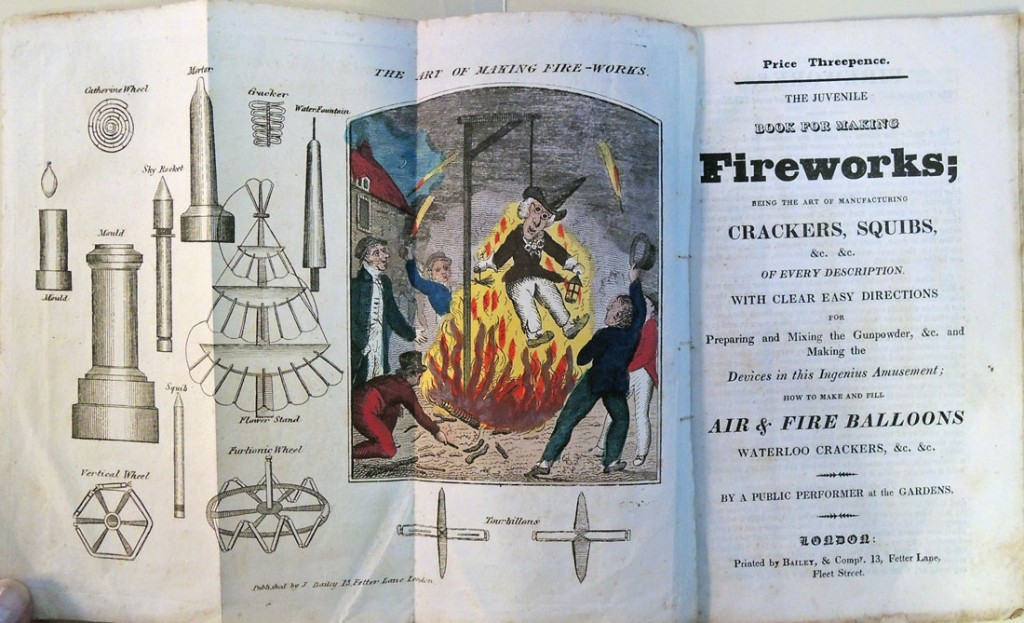 We noticed recently that the same wood engraved design (in reverse) made by George Cruikshank (“with help from my brother”) was used over twenty years later for the “juvenile” edition of the text. Both published by the London firm run by James Bailey.
We noticed recently that the same wood engraved design (in reverse) made by George Cruikshank (“with help from my brother”) was used over twenty years later for the “juvenile” edition of the text. Both published by the London firm run by James Bailey.
Our volume tops the bibliography compiled by Tom Gregorie Tullock in The Rise and Progress of the British Explosives Industry (Whittaker, 1909) “The subjoined complete list of books on explosives, published in England, has been added in the hope that students may find it useful. In some cases the name of the publisher could not be ascertained, no copy of the book in question having been found in the British Museum, or elsewhere in London. The references to books published before 1800 are all to the first editions, these alone having antiquarian interest; the references to books printed after 1800 are to the latest editions only.”
No date. T. Angelo. The Art of Making Fireworks Made Plain and Easy. London, J. Bailey.
No date. Christopher Grotz, Real Engineer. The Art of Making Fireworks, Detonating Balls, etc. London, Dean and Munday.
No date. “Practicus.” Pyrotechny, or the Art of Making Fireworks at Little Cost and with Complete Safety and Cleanliness. London, Ward, Lock and Tyler.
No date. Anonymous. The Art of Making Fireworks Improved to the Modern Practice. Derby, Thomas Richardson.
1560. Peter Whitehorne. Certain Waies for the Orderyng of Souldiers in Battelray. How to Make Saltpetre, Gunpowder, etc. London, John Wight.
1579- Thomas Digges. An Arithmeticall Militare Treatise Named Stratisticos (including a treatise of pyrotechnie and Great Artillerie). London, Henrie Bynneman.
1587. William Bourne. The Arte of Shooting in Great Ordnaunce. London, Thomas Woodcocke.
and so on.

